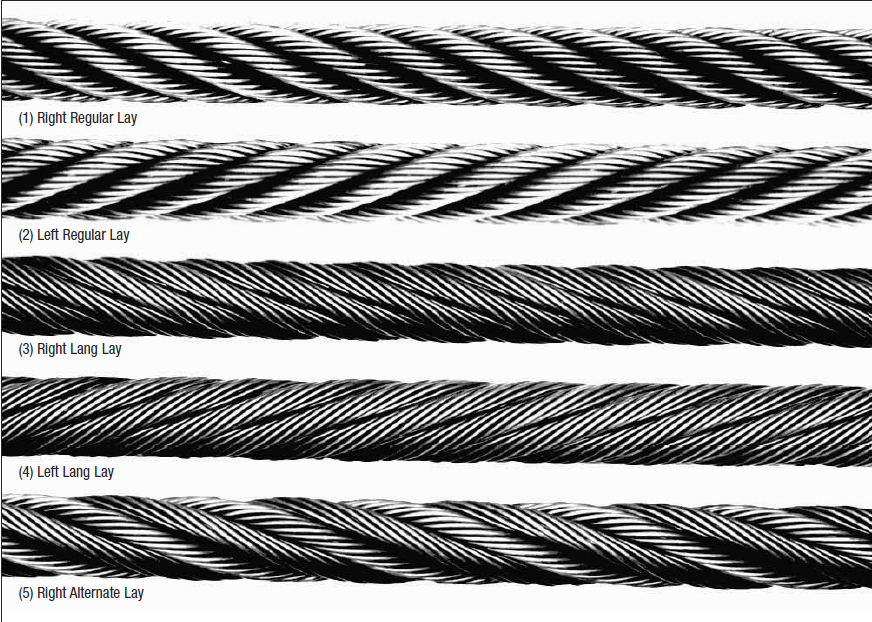
News > Construction of typical rope lays
Construction of typical rope lays
20
DEC 2019
Wire rope is identified not only by its component parts, but also by its construction, i.e., by the way the wires have been laid to form strands, and by the way the strands have been laid around the core.
A regular lay rope is one in which the direction of lay of the wires of the individual strands is opposite to that of the strands in the rope resulting in the individual wires running parallel to the longitudinal axis of the rope.
A lang lay rope is one in which the direction of the wires of the individual strand is the same as that of the strands in the rope resulting in the individual wires running diagonally across the longitudinal axis of the rope.
In an alternate right and left lay rope, the strands are alternately regular lay and lang lay. This construction is seldom used, its principal application being on button conveyors.
Lang lay ropes are advantageous over regular lay ropes in that the provide a greater wearing surface, result in less wear on sheave equipment and provide a greater bending fatigue resistance, however, they are not nearly as stable as regular lay ropes from a standpoint of resisting crushing and "bird-caging" therefore they are limited in their applications and should be used only where recommended by a qualified wire rope engineer.

